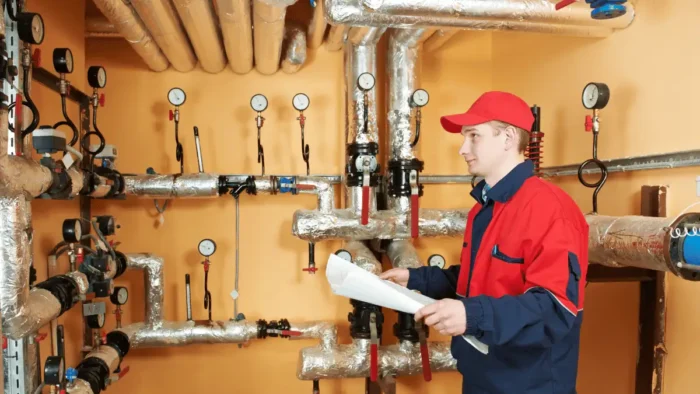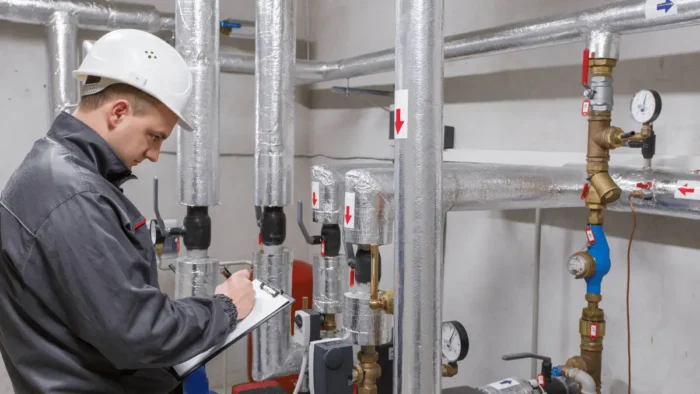The HVAC (heating, ventilation, and air conditioning) system is a fundamental component of any modern building. It plays a significant role in maintaining a comfortable and safe indoor atmosphere, especially during extreme weather conditions. However, HVAC systems also consume a significant amount of energy, which can lead to high electricity bills and increased environmental impact. Therefore, it is crucial to optimize the efficiency of HVAC systems.
In this blog post, we will discuss the role of valve and damper actuators in improving the energy efficiency of HVAC systems. These devices play a critical role in regulating the flow of air and water through the HVAC system. By controlling the flow of air and water, they help ensure that the HVAC system operates at peak efficiency, reducing energy consumption and cost.
Importance of optimizing HVAC efficiency
Optimizing the efficiency of HVAC systems is essential for cost savings and environmental benefits. According to the United States Department of Energy, heating and cooling account for approximately 48% of the energy use in a typical home, making HVAC systems the most extensive energy expense. Using Valve and damper actuators in HVAC systems is one way of optimizing the energy efficiency of the system, leading to reduced energy consumption and lower electricity bills.
HVAC systems that utilize valve and damper actuators can also lead to improved indoor air quality, occupant comfort, and productivity. Furthermore, optimizing the energy efficiency of HVAC systems has environmental benefits. By reducing energy consumption, companies can lower their carbon footprint, contributing to a greener future. For those looking for valve actuator spring for sale, investing in these devices can lead to long-term cost savings on energy consumption, reducing overall expenses in the long run.
Role of valve and damper actuators in HVAC systems
Valve and damper actuators play a crucial role in regulating the flow of air and water through the HVAC system, which consequently leads to optimal HVAC efficiency. The valve and damper actuator helps to control the amount of air or water flowing into certain parts of the HVAC system, keeping it at an optimal level. The process involves regulating supply air and exhaust air dampers, operating zone dampers, controlling heating and cooling water valves on heat exchangers, and many other applications.
One popular type of actuator is the spring return damper actuator, which uses a powerful torsion spring to move the damper into the required position. This actuator is highly reliable and efficient, capable of returning the damper to its default position even without power. This level of efficiency ensures that the HVAC systems operate precisely according to the requirements, and any deviations are quickly corrected using the spring return damper actuator. Overall, valve and damper actuators are vital components in optimizing HVAC systems, leading to optimal energy efficiency and cost savings.
How valve and damper actuators help improve HVAC efficiency
Valve and damper actuators improve the efficiency of HVAC systems by precisely regulating the flow of air and water, controlling temperature, and ensuring that energy is not wasted. By properly directing the flow of air and water into specific zones of the HVAC system, valve, and damper actuators help create and maintain temperatures consistent with the building’s design and intended use. This results in energy savings and improved occupant comfort, as the HVAC system only operates when there is a demand for heating or cooling.
Additionally, valve and damper actuators can work in conjunction with building automation systems to ensure that HVAC systems only operate when they are needed. For example, HVAC systems can be turned off or reduced in intensity during times when the building is unoccupied, leading to significant energy savings.

Types of valve and damper actuators available and their benefits
There are various types of valve and damper actuators available in the market, each with its specific uses and benefits. One popular type is the pneumatic actuator, which is widely used in industrial HVAC systems due to its durability and efficiency. Pneumatic actuators rely on compressed air to operate, which makes them ideal for hazardous environments where the use of electricity is prohibited. Another type is the electric actuator, which is easy to control and operate, making it popular in commercial and residential HVAC systems.
Electric actuators can work in conjunction with building automation systems, providing an efficient and reliable means of regulating airflow and temperature. Another type of valve is the characterized control valve, which is designed to modulate a specific flow through accurate control, ensuring that the HVAC system operates optimally. For those looking for a characterized control valve for sale, it is advisable to consult experts in the HVAC industry to guide them in selecting the best valve for their specific HVAC system needs.
Factors to consider when choosing valve and damper actuators
When selecting valve and damper actuators, it is crucial to consider certain factors to ensure they are suitable for the specific HVAC system. One crucial factor to consider is the type of HVAC system and the functions it performs. The HVAC system’s size and energy requirements should also be taken into account when selecting the valve and damper actuators. Additionally, the type of actuator suitable for the specific HVAC system should align with the building’s automation system or control system. In addition, it is essential to consider the installation requirements, including space, wiring, and compatibility with other components of the HVAC system.
The durability and maintenance requirements of the valve and damper actuators are also important to ensure that the devices perform optimally for an extended duration. Furthermore, environmental conditions, such as temperature, humidity, and airflow, could also impact the choice of valve and damper actuators. Finally, the cost is also an essential factor to consider, and companies should weigh the benefits of investing in high-quality valve and damper actuators for optimizing HVAC efficiency versus potential long-term energy savings.
By selecting the appropriate valve and damper actuators, companies can realize the benefits of energy efficiency and cost savings while minimizing environmental impact.
Case studies of successful implementation
One critical way to validate the effectiveness of valve and damper actuators in optimizing HVAC efficiency is to examine case studies of their successful implementation. There are examples of companies that have adopted valve and damper actuators and have experienced significant energy savings and cost reductions.
For example, a university in the United States reduced its energy consumption by 20% for its research laboratory by installing variable air volume (VAV) and constant volume (CV) damper actuators.
Another company that developed a new data center facility used a combination of valve actuators and electrical control valves to regulate the temperature and save energy. The actuator technology proved reliable and robust, significantly reducing energy consumption while maintaining optimal temperature and airflow throughout the facility.
Similarly, a manufacturing company that implemented zone valves and damper actuators in its HVAC system experienced energy savings of over 30% per year, reducing commercial power consumption. In all of these cases, studies demonstrated not only energy savings but also increased occupant comfort, improved indoor air quality, and reduced environmental impact.
It is clear that the use of valve and damper actuators can lead to significant benefits for companies and organizations, both economically and environmentally.
Conclusion
In conclusion, optimizing the energy efficiency of HVAC systems is not only important for cost savings but also for environmental benefits. Valve and damper actuators play an essential role in ensuring that HVAC systems operate optimally, leading to reduced energy consumption, improved occupant comfort, and increased productivity. When selecting valve and damper actuators for specific HVAC systems, it is crucial to consider the type of system, installation requirements, environmental conditions, and cost.
Additionally, there are various types of valve and damper actuators available in the market, each with its specific uses and benefits, including pneumatic and electric actuators, characterized control valves, and spring return damper actuators. Furthermore, case studies have demonstrated the effectiveness of valve and damper actuators in optimizing HVAC systems, leading to significant energy savings and cost reductions. Therefore, implementing valve and damper actuators in HVAC systems is a worthwhile investment for companies, resulting in long-term cost savings, improved energy efficiency, and reduced environmental impact.
As energy costs continue to rise, there is a growing call to action for companies and organizations to adopt more sustainable HVAC systems and valve and damper actuators are a crucial component of those systems.





